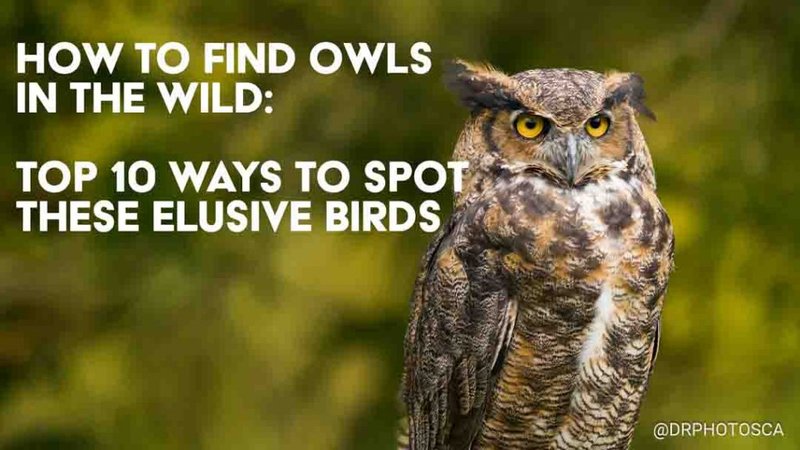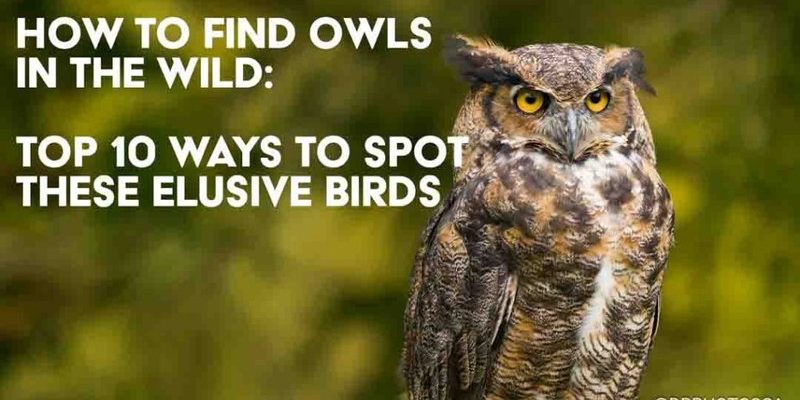
Identifying owls isn’t just about being lucky; it involves knowing what to look for. Think of it like solving a nature-themed puzzle. Each piece—like the owl’s size, color, and the way they behave—helps you figure out what kind of owl you’ve encountered. Grab a notebook, and let’s dive into the world of owls together.
Understanding Owl Species
Owls come in various shapes and sizes, and knowing the species can significantly enhance your identification skills. There are over 200 species worldwide, but in North America, you’re likely to encounter a handful of common ones.
- Great Horned Owl: This is one of the most recognizable owls, known for its tufted “horns” and striking yellow eyes.
- Barn Owl: With its heart-shaped face and ghostly appearance, this owl is found in many parts of the world.
- Barred Owl: Recognizable by its rounded body and the “Who cooks for you?” call, it’s quite common in eastern forests.
- Snowy Owl: Famous for its beautiful white plumage, this owl is often associated with colder climates, especially in the Arctic.
Knowing these species is just the beginning. Each owl has unique traits and calls that can guide you in the field. For instance, the Great Horned Owl is large, robust, and can weigh up to five and a half pounds, while the Barn Owl, although smaller, has an unmistakable silhouette in flight.
Size and Shape: What to Look For
When trying to identify an owl, size and shape are key factors. Owls vary widely in size, from the tiny Elf Owl, which is about the size of a canary, to the imposing Eurasian Eagle Owl, which can have a wingspan of nearly six feet! Here’s how to break it down:
– Body Shape: Look at the overall shape of the owl. Does it have a rounded body or a more elongated, slender appearance?
– Facial Features: The facial disc, or the area around the eyes, helps in sound localization. Barn Owls have a heart-shaped face, while Great Horned Owls sport more of a rounder shape with tufts.
– Wing Size: Larger owls typically have larger wingspans, which allow them to glide silently at night. If you see an owl soaring, pay attention to its wing beats and shape.
When you spot one, take a moment to observe these characteristics before moving on. This can make all the difference when trying to identify which owl you’re looking at.
Color and Patterns: The Camouflage Factor
Owls aren’t just nocturnal; they’re also masters of disguise. Their feathers often mimic the colors and patterns of their surroundings, making them challenging to spot. Here’s what to keep in mind:
– Coloration: Many owls are brown, gray, or white, allowing them to blend seamlessly into treetops or fields. For instance, the Spotted Owl has a mottled appearance that helps it hide in the forest.
– Patterns: Look for unique patterns such as stripes, spots, or barring. The Barred Owl, for example, has horizontal stripes on its chest that can help you identify it easily.
– Feather Texture: The texture of their feathers can also be a clue. Some have soft, fluffy feathers for silent flight, while others have more rigid textures.
Remember, the way an owl is colored can help it survive in the wild. If it blends into its environment, it’s less likely to become a meal for other predators.
Behavioral Clues to Identify Owls
Owls have unique behaviors that can give you hints about their identity. Watching how they fly, hunt, and interact with their environment can provide valuable information.
– Flight Patterns: Owls are known for their silent flight. If you see a bird gliding without making a sound, there’s a good chance it’s an owl. The way owls flap their wings can also vary—some are more graceful than others.
– Nocturnal Activity: Visit your local woods at dusk or dawn, as owls are primarily active at night. If you hear hooting or see one perched quietly, pay attention; this could be a sign of a nearby nest!
– Hunting Techniques: Some owls hunt alone, while others may hunt in pairs. For instance, Great Horned Owls often hunt larger prey like rabbits, while Barn Owls typically feast on smaller rodents.
Paying attention to these behaviors not only enhances your identification skills but also deepens your appreciation for these fascinating creatures.
Listening for Calls and Sounds
Did you know that an owl’s call can be as distinctive as its appearance? Each species has its own unique hoot, screech, or whistle. If you want to effectively identify an owl, learning to recognize these calls can be incredibly valuable.
– Hooting: The Great Horned Owl is famous for its deep, resonant hoots, often heard in the evening. If you hear a welcoming “whooo,” that might be your clue!
– Screeches and Whistles: Barn Owls make eerie screeching sounds, which can sound almost ghostly. These calls are often used to scare off competitors or attract mates.
– Chirps and Barks: Some owls, like the Eastern Screech Owl, make short chirps or bark-like calls that can be helpful in the identification process.
Taking the time to listen can be just as crucial as looking. Spend a quiet evening outdoors and let the sounds of the night guide your search for these beautiful birds.
Where to Look for Owls
Knowing where to search can drastically improve your chances of spotting an owl. While they can be found in various habitats, some places are better than others for owl-watching.
– Forests and Wooded Areas: Many owls prefer mature forests with plenty of trees for roosting and hunting. Look for them perched on low branches or in tree cavities.
– Open Fields and Grasslands: Barn Owls often hunt in open areas, where their keen eyesight allows them to spot small mammals.
– Urban Areas: Believe it or not, some owls have adapted to urban environments. Parks, cemeteries, and even golf courses can be great spots to find them.
When you’re out and about, keep your eyes peeled. You might spot an owl sitting quietly in a tree, blending in with its surroundings.
Tips for Observing Owls Respectfully
Owls are incredibly sensitive creatures, and it’s important to observe them respectfully. Here are some key reminders to keep in mind:
– Maintain Distance: Use binoculars or a camera with a zoom lens to observe owls without disturbing them.
– Be Quiet: Avoid loud noises, as this can startle them. Move slowly and quietly to avoid disrupting their habitat.
– Don’t Approach Nests: If you suspect you’ve found an owl’s nest, steer clear. Disturbing nesting owls can lead to abandonment or stress for the young birds.
By being respectful in your observation techniques, you help ensure these marvelous creatures can thrive in the wild for generations to come.
In conclusion, spotting an owl is like embarking on a delightful treasure hunt. By observing their size, shape, color, behavior, and calls, you equip yourself with the tools needed to identify these magnificent birds in the wild. The next time you’re walking through the woods at dusk, remember to be patient and keep your eyes and ears open. Who knows? You might just connect with one of nature’s most fascinating creatures!

